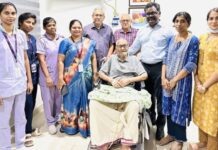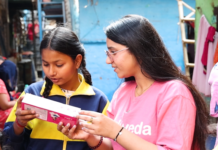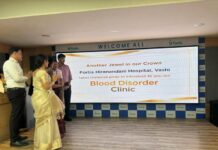Dr Arpit Mittal ,Consultant, Pediatric Hematology and Oncology, HCG Cancer Center, Jaipur
Childhood cancer, unlike other forms of cancer, affects children and adolescents, typically until the age of 19. While cancer in children is comparatively rare, it could cause profound problems for these young patients and their families. Childhood cancers differ from adult cancer in terms of cancer type, growth rate, lack of identifiable causes, and response to therapy. In contrast to adult cancer, most pediatric cancers are highly curable. Childhood cancers are not common; however, with a growing number of cases, it is evident that there is a need to understand the different forms of childhood cancer, its causes, and risk factors to aid in deciding the right prevention and treatment actions.
The most common type of childhood cancer is leukemia or blood cancer. Other cancers include brain tumors, lymphomas, solid tumors like neuroblastoma, Wilms tumors, germ cell tumors, retinoblastoma, and bone tumors such as osteosarcoma, Ewing sarcoma, etc.
Leukemia or Blood Cancer: About 30% of childhood cancer cases are accounted for by leukemia or blood cancer. This form of cancer mainly affects the bone marrow and blood, leading to an overproduction of immature white blood cells.
Neuroblastoma: This form of cancer primarily affects infants and young children. This cancer mainly affects the adrenal glands and arises from immature nerve cells.
Wilms Tumor: This cancer typically affects children aged between 3–4-year-old. The primary site of target for this cancer is the kidneys.
The exact causes of childhood cancer are not clear, but there are some risk factors associated with childhood cancer:
· Genetic Predisposition: Unlike adult cancer, most pediatric cancers have no identifiable cause. Cancer usually occurs due to acquired mutations. A genetic predisposition exists in a few cases (4-8% of cases).
· Environmental Factors: Exposure to harmful toxins and radiation from a very young age can increase the risk of childhood cancer.
· Age: Certain types of childhood cancer affect children in specific age groups. For example, neuroblastoma often occurs in infants, whereas lymphoma is most common among teenagers.
· Gender: Certain types of childhood cancers are specific to gender. While Wilms tumor occurs more in girls, neuroblastoma occurs more frequently in boys.
· Medical History: Specific medical conditions and treatments, such as immunosuppressive medications and radiation therapies, can account for an increased risk of cancer among children.
Is this cancer curable? If so, how? These are some of the concerns raised by the family members of young patients diagnosed with cancer.
Cancer in children is highly curable. Seventy to eighty percent of childhood cancers can be cured with specialized care. The treatment of childhood cancer is complex and consists of chemotherapy, radiation therapy, surgery, or a combination of these modalities. In some cases, a bone marrow transplant is required. Avoidable deaths from childhood cancer result from delayed diagnosis, lack of specialized pediatric cancer care, treatment abandonment, toxicity, and relapse. Most of these issues can be prevented with specialized care.
Treatments such as Bone Marrow Transplant (BMT) can help cure cancer. Bone marrow transplant is a non-surgical treatment modality and a curative option for multiple cancers like high-risk or relapsed leukemia, relapsed lymphoma, neuroblastoma, and others. It is also curative in certain non-cancerous conditions like Thalassemia, Sickle cell anemia, Aplastic anemia, and certain metabolic and immunodeficiency disorders. BMT comes in two types: Autologous and Allogeneic. In autologous BMT, patients’ stem cells are collected and reinfused after administering chemotherapy. In allogeneic BMT, stem cells from donors are collected and administered to patients.
With specialist guidance and follow-up care, children with cancer can lead everyday lives compared to their peers.






















